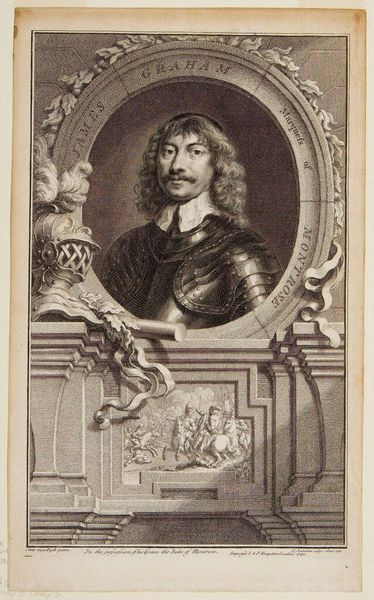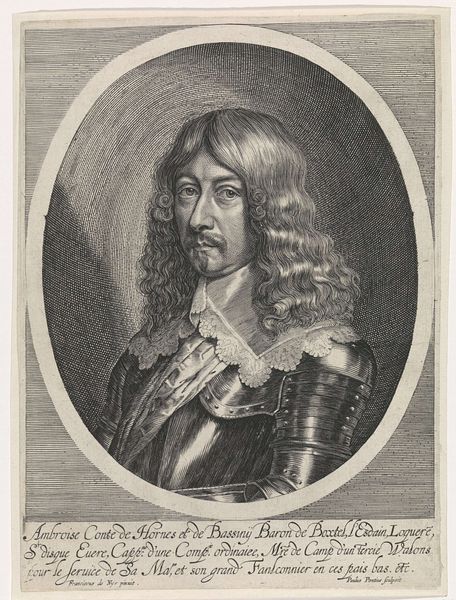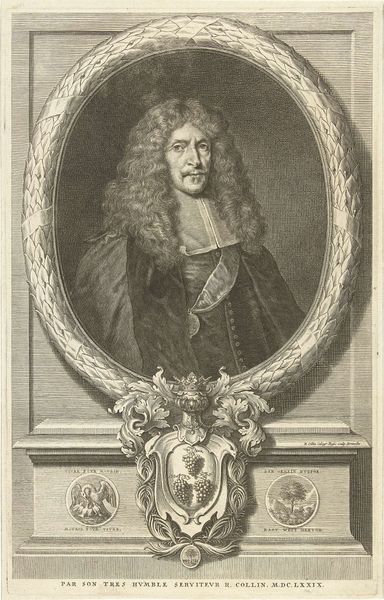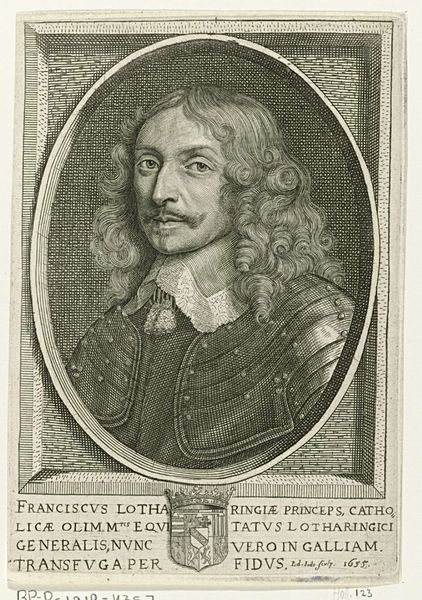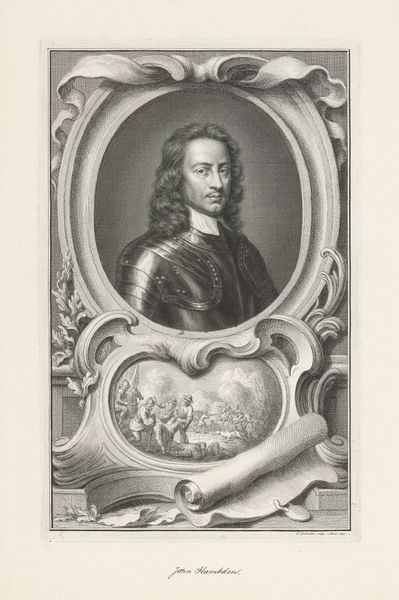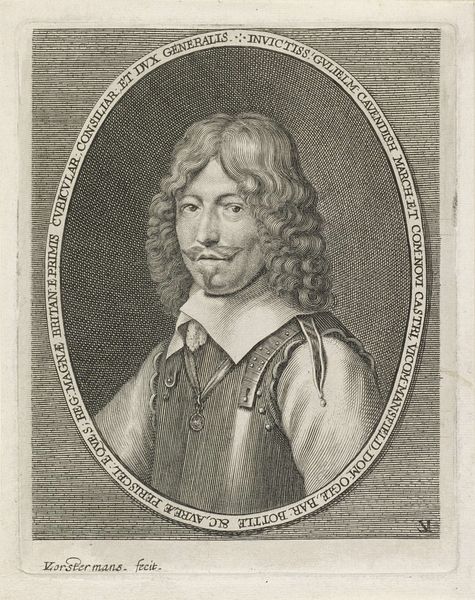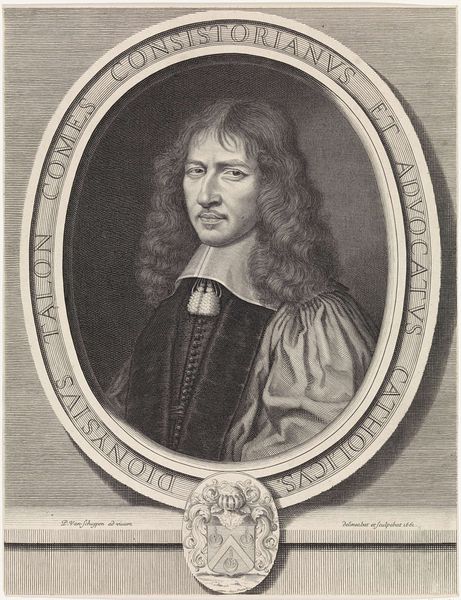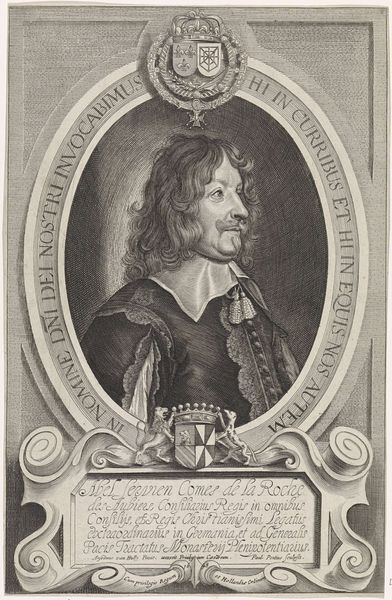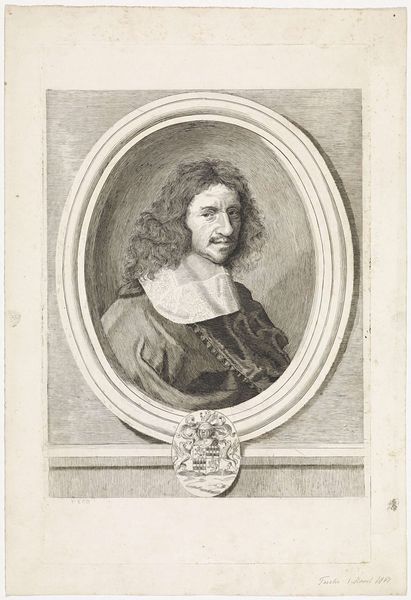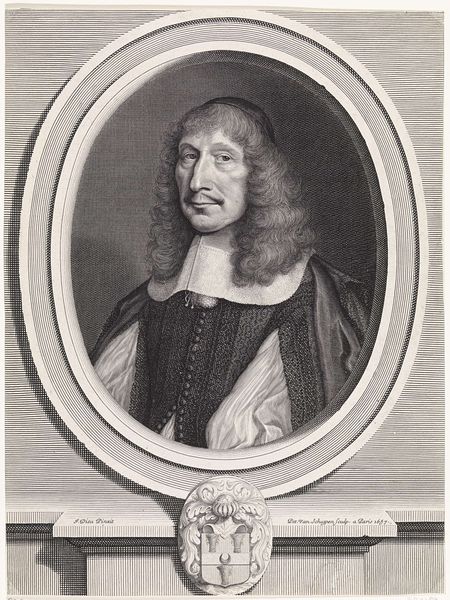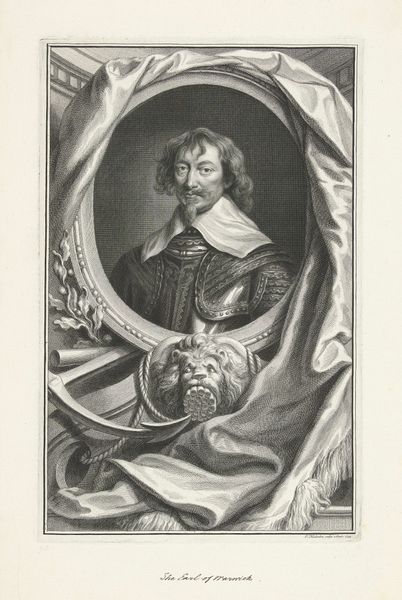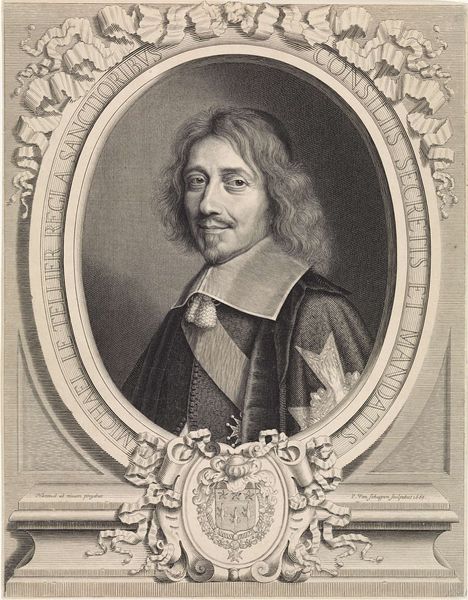
print, engraving
#
portrait
#
baroque
# print
#
old engraving style
#
old-timey
#
limited contrast and shading
#
19th century
#
history-painting
#
graphite
#
engraving
Dimensions: height 374 mm, width 235 mm
Copyright: Rijks Museum: Open Domain
Editor: Here we have a print from 1740 by Jacob Houbraken titled "Portrait of James Graham, 1st Marquis of Montrose." It has such a formal and stately presence; almost like a monument. I'm curious, what's your take on this work, considering its historical context? Curator: It’s fascinating how this print, made decades after Montrose’s death, constructs a particular image of him. The baroque style frames him not just as an individual, but as a figure within a specific historical narrative. The armor, the laurel wreath—these are all deliberate choices designed to project power and legacy. How do you think such imagery contributed to shaping his public perception? Editor: That's interesting. I guess it presents him in a light that’s designed to reinforce a certain understanding of his place in history. Like a very carefully constructed brand. The battle scene depicted further emphasizes him as a military leader. Curator: Precisely. Consider who might have commissioned or consumed this print. Was it for family remembrance, widespread propaganda, or something else? The answer can tell us a lot about the political and social forces at play, and about the enduring power of portraiture to shape historical memory. These prints had immense power in shaping popular historical narratives and legitimizing certain power structures. Do you agree with that assertion, that history-painting often serves hegemonic forces? Editor: I can see your point. It wasn't necessarily about accurately documenting an individual, but about cementing a particular interpretation for future generations. The symbolism isn't accidental. I learned that considering the social factors behind an artwork can add to our understanding of its value as source of information on past societies and ideological apparatuses. Curator: Absolutely! This highlights the complex relationship between art, power, and historical representation.
Comments
No comments
Be the first to comment and join the conversation on the ultimate creative platform.
